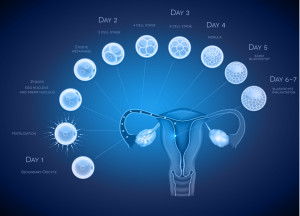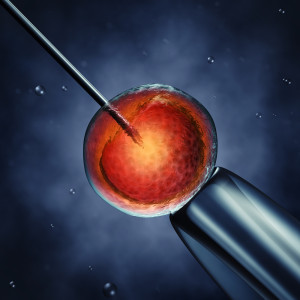Fresh, frozen, PGD, blastocyst, biopsy, eggs, transfer. All of these are words that go along with an embryo and if you are having issues with fertility, you have probably heard them but you may not know exactly what they all mean. The human reproductive system is fascinating, but it’s so in-depth that even though we throw all these terms around, many people aren’t clear about exactly what’s happening. So what is surrogacy and how does surrogacy work? Let’s start at the beginning first to explain how surrogacy works:
An embryo is when an egg has been fertilized. With In Vitro Fertilization (IVF) eggs are removed from the mother, or egg donor, then fertilized in a lab with the father’s, or sperm donor’s, sperm. The fertilized egg then enters the “cleavage stage,” where it takes about 3 days to develop. Once the cleavage stage finishes, decisions must be made regarding the process of embryo transfer.
If the Intended Parent (IP) is doing a fresh cycle transfer, the surrogate would already be prepped for IVF. This would be accomplished by giving her hormones to ready her body by tricking it into feeling pregnant already. Now, if desired, the embryos may be transferred right away. However nowadays it’s a lot more common to wait a little longer to allow the embryo to keep developing and becoming a blastocyst. That happens around day five or six when the embryo starts to grow out of it’s zona pellucida or “shell” and prepares itself to attach to the uterine wall. At this stage if the IP so chooses they can do what is called a Preimplantation Genetic Diagnosis (PGD) embryo screening to check for certain genetic or chromosomal disorders before implantation. This is basically a cell biopsy of the blastocyst that doesn’t effect the quality of the embryo. The IP(s) may also choose to know the sex of the embryos at this time as well.
Again comes more decisions to be made. If the surrogate is ready the transfer may be done after testing, however by day 6 embryos that are not implanted need to be frozen. If for any reason the IP wishes to wait or there are complications such as the surrogate cycle isn’t synced up with the embryo’s development, or hormones levels aren’t high enough in the surrogate the embryos are frozen for future use. This may be for as little as 24 hours or for years if the IP wishes to keep them for possible future transfers. The normal maximum time embryos can be frozen and keep their quality is 10 years.

No matter how long the embryos have been developing or how long they are frozen, all are graded and given a quality rating from A+ down to C. When using hormones to increase the mother’s or donor’s egg count on average around 20+ eggs will be removed. The number can be much higher or lower depending on the age and health of the woman but that’s a good rough estimate. However, all of that quantity doesn’t necessarily mean quality. Many will not continue to develop after fertilization and many more that do will not score high enough grading to be surrogacy transfer quality. Fertility doctors are looking for A rated embryos. These are the practically-perfect-in-every-way embryos that make those happy healthy little babies. B’s are good too, but out of a 20+ eggs usually (again completely rough estimate here) you’d be lucky to get 8 or so really good ones.
Nowadays the most common amount of embryos transferred is two. It used to be three or four but over the years as success rates with IVF have increased (Yay!!!) this has resulted in more and more multiple births. With today’s technology and if all the testing has been done, it is very likely that with even one good embryo the surrogate will become pregnant.
Funnily enough, the chances of becoming pregnant with a frozen embryo are just as high (and some doctors even swear higher) then with a fresh cycle. They’re still not sure why. Some speculate that it has to do with the improved uterine receptivity that comes with allowing for the surrogate’s more natural cycle—placing the thawed embryo when the surrogate is ready and not having to sync egg and uterine cycles—but that is just a theory. All we know is that it’s working and working better than ever before, which makes everyone involved in IVF very happy indeed.
I hope this embryo information has cleared up some of your questions. If you are still unclear or you have any other questions about how surrogacy works or relating to our embryo surrogate information guide, please don’t hesitate to talk to anybody here at SAI or leave a comment below. We’re here to help. It’s what we do. 🙂









